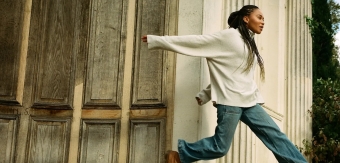You have just under two weeks to get down to the Serpentine Gallery in London’s Kensington Gardens to see this year’s Pavilion, designed by multi award-winning Japanese architect Sou Fujimoto.
Over the years, the Serpentine Gallery has seen many exciting and original pavilions installed, by heavyweights such as Frank Gehry and Zaha Hadid. At 41, Fujimoto is the youngest architect to receive the prestigious commission – although his age belies the fact that he is considered one of the most important contemporary architects in the world. Most of his work has been in his native Japan, but these have ranged widely – from the domestic (including Final Wooden House) to much larger commissions (including an art museum and library at Musashino Art University.
What is common to his structures, though, is the fusion of the artificial with nature – a juxtaposition and bond that he admits can seem contradictory initially. The same is true of his pavilion. He says, “I tried to create something really outstanding…but at the same time, something really melting in this park. It sounds like a contradiction, but to create artificial things and natural things meshing together to create something new – that was the starting point.”

Although much of the structure was prefabricated at Studio One in York, it still took two months to construct the pavilion on site. Made up of a series of 80cm cubes, the lightweight steel latticed structure with a semi-transparent appearance occupies a 350 square metre area of lawn in front of the Serpentine Gallery and almost looks like a fabricated cloud.
Apart from the café area at the bottom, at first glance, it can seem like something to just look at from a distance. But some of the 80cm cubes are divided into 40cm cubes, providing various levels where visitors can go and sit on stepped terraces to meditate, contemplate and relax. There is a sense of being outdoors and “at one with nature” while also interacting with the modern installation – whatever the weather: transparent circular discs above prevent visitors from the elements, and vertical panels act as windbreaks.
"[It is] a transparent terrain that encourages people to interact with and explore the site in diverse ways,” explains Fujimoto. “Within the pastoral context of Kensington Gardens, I envisage the vivid greenery of the surrounding plant life woven together with a constructed geometry. A new form of environment will be created, where the natural and the man-made merge; not solely architectural nor solely natural, but a unique meeting of the two.
The delicate quality of the structure, enhanced by its semi-transparency, will create a geometric, cloud-like form, as if it were mist rising from the undulations of the park. From certain vantage points, the Pavilion will appear to merge with the classical structure of the Serpentine Gallery, with visitors suspended in space."
There’s no doubt that Fujimoto has created a striking structure, looking as it does like the bare-bone structure of an artificial cloud which has landed gently on the grass. And in spite of the fact that it is primarily made up of a steel lattice, it has a certain warmth to its shape. "Architecture should provide a background structure that allows people to behave in a different way,” says Fujimoto. “I want visitors to find cosy spaces here."
Ashley is a copywriter, editor and blogger
Follow him on Twitter
Connect with him on LinkedIn






